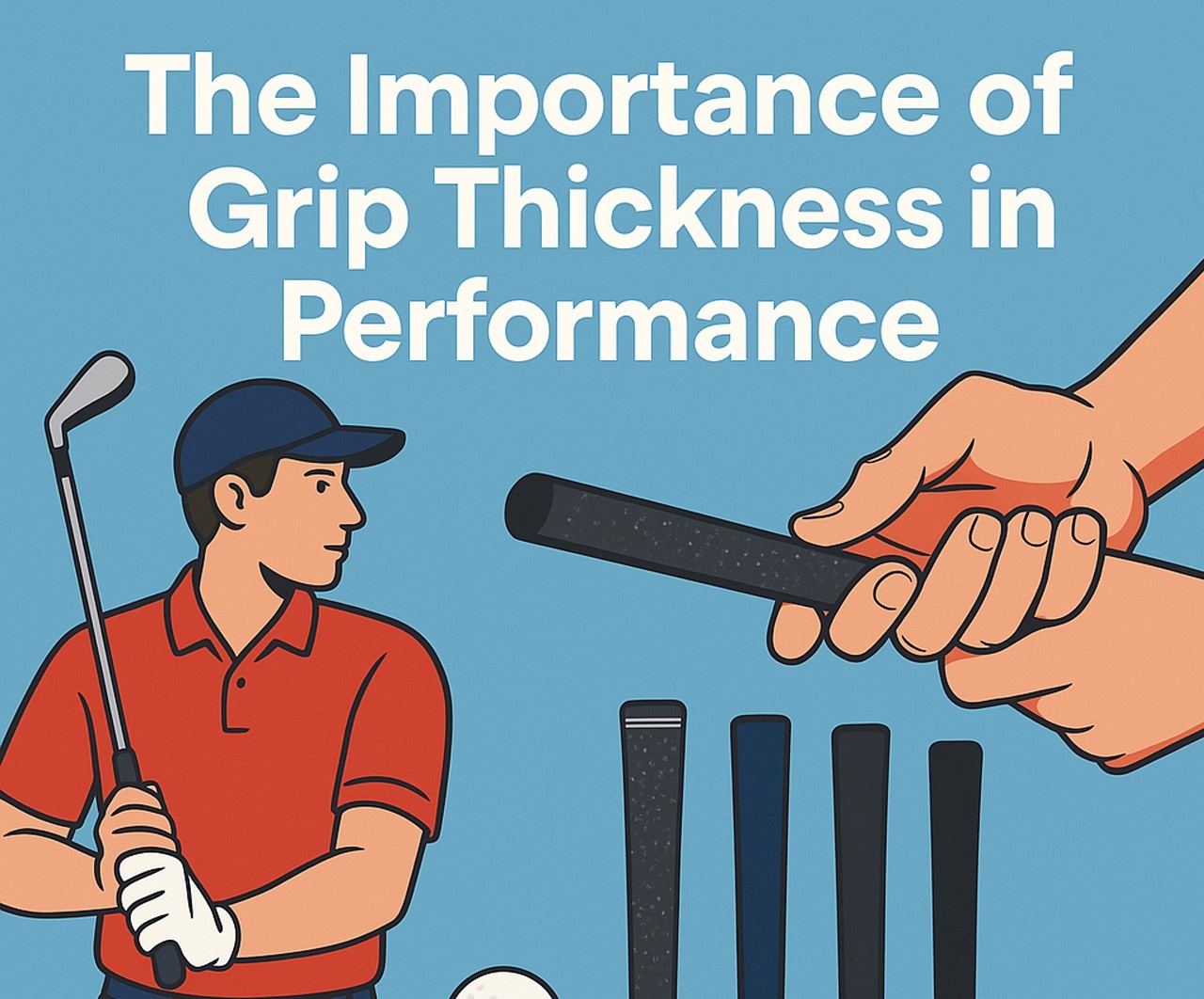When it comes to sports performance, athletic training, and strength conditioning, one often-overlooked factor is grip thickness. Whether you are lifting weights, swinging a golf club, or holding a tennis racket, the thickness of your grip plays a critical role in how efficiently you can generate power, maintain control, and prevent injuries. Athletes across various disciplines understand that optimizing grip size can significantly impact their endurance and effectiveness. But how exactly does grip thickness influence performance, and what should athletes consider when selecting the right grip size? Know more..
The Science Behind Grip Thickness
Grip thickness affects the biomechanics of hand and forearm muscles, influencing the way force is transmitted through the upper body. A grip that is too thick or too thin can lead to inefficient force application, increased muscle fatigue, and a higher risk of injury. Studies have shown that improper grip size can reduce overall sports performance, as it affects grip endurance, forearm activation, and overall strength output.
For example, in weightlifting, a barbell with an excessively thick grip can decrease an athlete’s ability to lift maximal loads because of premature grip fatigue. Conversely, a grip that is too thin may cause instability and require excessive wrist and forearm engagement to maintain control. The same principles apply in athletic training disciplines like rock climbing, tennis, and even cycling, where grip endurance is paramount for sustained performance.
The Role of Grip Thickness in Different Sports
Weightlifting and Strength Training
In weightlifting, grip thickness directly influences an athlete’s ability to hold and maneuver heavy loads. Thicker grips, such as those created by fat grips or specialty barbells, force athletes to engage their forearm muscles more intensely. This increased engagement can be beneficial for building grip strength but may hinder overall lifting performance if not properly trained. Many strength athletes incorporate thick-bar training to improve forearm development, but for competition, they revert to standard-sized grips to maximize lifting capacity.
Golf and Tennis
In sports like golf and tennis, where precise hand positioning and wrist movements are crucial, grip thickness determines control, comfort, and injury prevention. A grip that is too thin can lead to over-gripping, causing unnecessary tension and increasing the risk of conditions such as tennis elbow. On the other hand, a grip that is too thick can limit wrist mobility, reducing the ability to generate spin and power.
Golfers, for example, often fine-tune their grip size based on their swing mechanics. A slightly thicker grip can help control excessive wrist movement, making shots more consistent. However, an overly thick grip may limit the natural wrist hinge, reducing shot distance.
Combat Sports and Martial Arts
For fighters in boxing, mixed martial arts, or wrestling, grip thickness plays a pivotal role in securing holds and controlling opponents. A strong grip can mean the difference between executing a successful submission hold or losing control in a clinch. Training with thicker grips, such as using fat grips on pull-up bars or gripping thicker ropes, can enhance grip endurance and forearm strength, giving fighters an edge in their matches.
How to Determine the Right Grip Thickness
Finding the optimal grip thickness depends on several factors, including hand size, sport-specific demands, and individual preferences. Here are some key considerations for choosing the right grip size:
1. Measure Hand Size
Larger hands generally benefit from slightly thicker grips, while smaller hands may find thinner grips more comfortable. Many sports equipment manufacturers offer different grip sizes, allowing athletes to choose based on hand dimensions.
2. Consider the Sport-Specific Demands
Each sport requires a different approach to grip thickness. A weightlifter may incorporate thick grip training for increased forearm engagement, while a tennis player may need a moderate grip thickness for precision and power balance.
3. Test and Adjust
Athletes should experiment with various grip sizes to determine what feels most natural. Many sports allow for customization, such as adding grip tape, using different handle designs, or selecting equipment with adjustable grips.
The Connection Between Grip Thickness and Injury Prevention
One of the most overlooked aspects of grip thickness is its role in injury prevention. Using an incorrect grip size can lead to wrist strain, elbow pain, and even chronic conditions like tendinitis. A poorly sized grip forces muscles and tendons to overcompensate, leading to repetitive strain injuries over time.
For example, tennis players who use grips that are too small often suffer from tennis elbow due to excessive forearm tension. Golfers with improper grip sizes may experience wrist pain from compensatory movements. By choosing the right grip thickness, athletes can prevent unnecessary strain and enhance long-term durability.
Enhancing Grip Strength Through Training
If an athlete struggles with grip thickness, specific training strategies can help improve grip endurance and strength:
- Thick Bar Training: Incorporate thicker grips on barbells, dumbbells, and pull-up bars to enhance forearm strength.
- Hand Grippers: Use resistance-based hand grippers to develop crushing grip power.
- Hanging Exercises: Dead hangs and towel pull-ups build endurance for sustained grip control.
- Wrist Curls and Extensions: Strengthening wrist flexors and extensors can improve overall grip stability.
Final Thoughts
Understanding the importance of grip thickness is essential for maximizing sports performance and optimizing athletic training. Whether lifting weights, swinging a racket, or controlling an opponent in combat sports, selecting the correct grip size can enhance power output, prevent injuries, and improve overall efficiency. By incorporating grip-specific training and adjusting equipment accordingly, athletes can achieve better results and sustain long-term performance.
Choosing the right grip thickness is not just about comfort—it’s about performance, endurance, and injury prevention. As sports science continues to evolve, more athletes are recognizing the impact of grip customization in their respective fields. So, next time you pick up a barbell, golf club, or racket, remember that grip size could be the key to unlocking your full potential.

